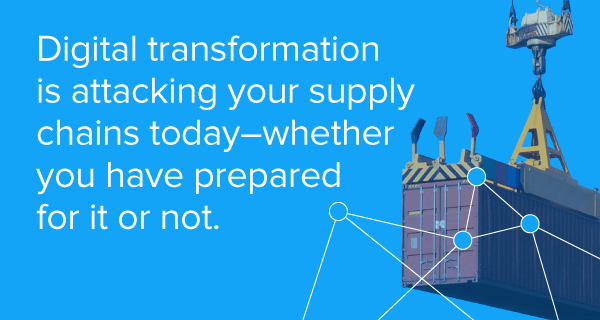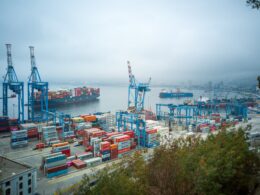Laila Beswick, GT Nexus
Most businesses think digital transformation is something that their supply chain is waiting for them to do.
As analyst reports and trade articles exhort businesses to begin the digital transformation of supply chains, most IT leaders picture a long and painful IT project that involves lots of master data issues. Laborious documentation and re-engineering of daily practices, create a multi-year project that slowly but eventually replaces legacy systems and processes with newly-minted versions?
But this is all wrong.
Perhaps five or six years ago, there was a window of opportunity for big business to leap ahead in the digital disruption curve. Far-sighted, fast-moving companies could—and some did—engage systematically in upgrading supply chain processes and connectivity across their partner ecosystems. For most companies, supply chains have always been stuck at the tail-end of their innovation focus, well behind new product R&D, ecommerce, M&A strategies and even servitization initiatives, among manufacturers.
But digital transformation has not been waiting for capital budget approval processes, your IT priorities on ERP roll-outs, or sales organisations to understand new buying signals from the customer base.
It has been steadily undermining traditional assumptions about market dynamics, competitive positioning and consumer behaviour.
It has crept into B2B relationships and distribution channels that once marched in sync with 3 or 5-year planning cycles.
It’s undercut the foundations of existing product planning lifecycles and market forecasting.
And it is attacking supply chains today–whether a business has prepared for it or not.
The Digital Genie
It’s already too late for most businesses to establish control over the rate at which digital transformation is affecting supply chains. The market disruption enabled by the digital economy has built momentum and appears to have hit the accelerator this year.
Brick-and-mortar businesses that kept a wait-and-see attitude about the need for transformation are retrenching across North America in the face of systemic sales decline. Fast fashion and additive manufacturing are upending historical expectations about supply chain responsiveness and fulfillment speed. Final mile delivery to the end customer is taking massive mind-share in logistics operations.
The digital genie is out of the bottle. The question for supply chain executives is not IF, or WHEN, but HOW their organisations can face rapid, ongoing and mostly unpredictable change with increased speed and resilience.
If you are caught in this, don’t plan on a new supply chain ‘structure’ to respond to turbulent market dynamics and surging competitive pressures. Focus instead on developing capabilities within your supply chain organisation that enable frequent internal changes and ecosystem re-balancing. Markets, economic climates and competitive threats are increasingly unpredictable and cycle more rapidly than ever before. Mitigate the risks of change by improving the ability of your supply chain systems and service networks to adapt to it, continually.
Supplier relationships and geographies aren’t likely to change as quickly as market shifts do, because they involve financial and product flow commitments that require negotiation, contracts and investment planning on both sides. But interaction with those suppliers can be accelerated and made more transparent with digital enablement for global commerce, especially when collaboration and transactional execution can be shifted to a network platform. Choosing a network platform that already hosts a high density of trading partner activity and connectivity for your industry or markets brings ‘network effect’ benefits to your supply chain agility.
The only question left is how far do you have to catch up?













